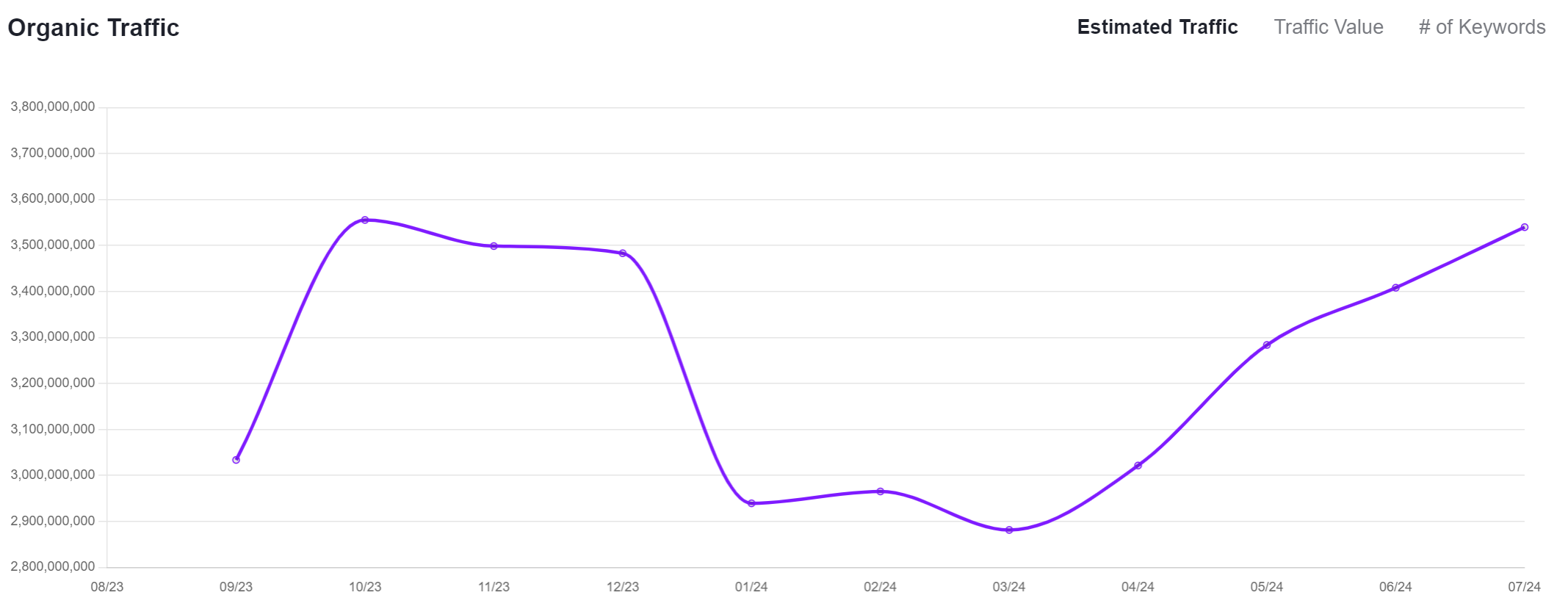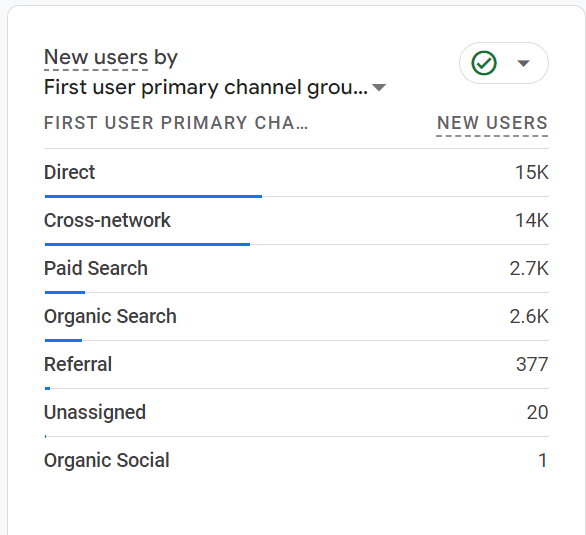What Is a CMO Dashboard, and Why Does It Matter? (Plus Metrics To Include in Yours)
As a Chief Marketing Officer (CMO), you want to stay in the know about your marketing performance. Keeping your finger on your marketing’s pulse ensures you’re making a wise investment with your budget.
So, what’s the best way to stay in the loop? With a CMO dashboard, of course!
On this page, we’ll cover everything you need to know about creating a CMO dashboard, including:
Keep reading to learn more!
What is a CMO dashboard?
A CMO dashboard is a comprehensive overview of your marketing performance based on to your CMO dashboard is a must. Organic traffic indicates the volume of people visiting your website through unpaid sources, like organic search listings.

Tracking this metric helps you understand the effectiveness of your organic marketing strategies, like search engine optimization (SEO) and content marketing. It helps you understand if you’re effectively driving traffic to your website and enticing people to choose your listings over competitors.
9. Sales Qualified Leads (SQLs)
What it indicates: How many leads you’re obtaining that are likely to become customers
Why you should add it to your CMO dashboard: Tracking your Sales Qualified Leads (SQLs) in your CMO marketing dashboard is important for seeing how your marketing aligns with your sales team. If you have a continuous flow of SQLs, it indicates that your marketing is effective at targeting the right audience, addressing pain points, and positioning your product/service as the solution.
You can also track Marketing Qualified Leads (MQLs) to see how your marketing effectively drives leads, but SQLs will be an even bigger focus because those leads translate into revenue for your company.
10. Source of traffic
What it indicates: How people find your website/what’s driving people to your website
Why you should add it to your CMO dashboard: Tracking your traffic source is an important piece of CMO dashboards because it indicates which strategies drive traffic. Understanding where traffic comes from helps indicate the effectiveness of your marketing.

But how is this different from tracking revenue sources? Well, the customer journey is not linear — many people interact with multiple touchpoints with your business before converting. So, just because a strategy drove revenue, doesn’t mean it was the only source that impacted the customer’s journey.
For example, if someone visits your website via a blog post from search results, then later clicks on an ad and purchases, the ad will get credit for the revenue. Realistically, though, the blog post had an impact on their journey that ultimately led them to buy.
By tracking the source of your traffic, you have a better indication of what drives people to your website in the first place and how those strategies ultimately impact the person’s decision to buy.
11. Organic search volume
What it indicates: The effectiveness of your keyword targeting and content creation
Why you should add it to your CMO dashboard: Organic search is one of the most common ways people find websites online. That’s why it’s important to include organic search volume as part of your CMO marketing dashboard.
This KPI indicates whether your keyword targeting is effective on your website, as well as whether your content resonates with your audience. If you’re ranking well for keywords, it indicates your content is relevant to your target audience.
Tracking this metric helps you understand whether you need to adjust your keyword targeting and content creation strategy to rank better in search results.
12. Churn rate
What it indicates: The health of your customer retention
Why you should add it to your CMO dashboard: Not all metrics in your CMO reporting dashboards are happy ones. An important KPI to include in your dashboard is churn rate, which measures how many customers stop buying your products or using your services.
While this metric can be a bit of a damper, it’s important to keep tabs on it to understand if you’re creating loyal customers that keep coming back. If you have a high customer churn rate, it’s an indication that something is deterring those customers from buying again.
By monitoring your churn rate, you can quickly identify when customers are dropping off and find solutions to keep loyal customers happy and buying from you.
13. Customer Lifetime Value (CLV)
What it indicates: The monetary value customers contribute to your business over their “lifetime”
Why you should add it to your CMO dashboard: Churn rate and customer lifetime value (CLV) go hand in hand, which is why you’ll want to track both in your CMO dashboards. CLV gives you insight on the value of your customers to better understand how much they’ll spend with you before they churn.
Tracking this metric is important because it costs more to market to a new customer than a loyal customer, so you want to keep customers once they buy from you. If you have a low CLV, it may indicate you need to adjust your marketing to keep customers loyal and continually buying from you.
14. Returning visitors
What it indicates: How many people come back to your website to learn about your business/products/services
Why you should add it to your CMO dashboard: An important part of marketing is building brand awareness to help people familiarize themselves with your offer. Adding returning visitors to your CMO dashboard will help you see if people come back to your website, for example, to revisit a blog post.
Returning visitors indicate you’re offering something of value to your audience — enough so that they come back to visit again. Monitoring this metric can help indicate the value of your content and provide some context for potential brand awareness that you’re building.
Unhappy with the metrics in your CMO dashboard?
Once your CMO dashboards are set up, and you’re monitoring the results, you may feel unhappy with what you see. If you want to improve your KPIs and revenue, the team at WebFX can help.
Our revenue-driving marketing plans focus on helping your business achieve its marketing goals to drive revenue and business growth. With our custom marketing plans, we’ve already driven $10 billion in revenue for our clients.
When you partner with us for your digital marketing needs, you’ll gain access to a curated CMO dashboard through MarketingCloudFX, our client-exclusive marketing software.
When you decide you’re ready to take your marketing to the next level, we’re ready to help. Contact us online or call us today at 888-601-5359 to speak with a strategist about our digital marketing services!
